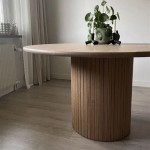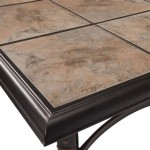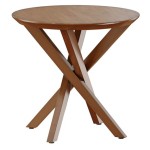Marble Top Antique Side Tables: A Guide to Elegance and Functionality
Marble top antique side tables represent a timeless blend of elegance and practicality. These pieces, often inherited or discovered in antique shops, add a touch of sophistication to any interior space. Their enduring popularity stems from the unique combination of durable construction, classic aesthetics, and the potential to serve as statement pieces.
Marble, a metamorphic rock formed from limestone, has been prized for its beauty and durability for centuries. Its use in furniture dates back to ancient civilizations, where it was employed in palaces and temples. The inherent coolness of marble also made it a desirable material for tabletops, particularly in warmer climates. This historical context contributes to the aura of timeless elegance surrounding marble top antique side tables.
The variety of marble types used in these tables contributes to their unique character. Carrara, known for its white or blue-grey veining, is a popular choice. Other varieties, such as Calacatta with its dramatic veining, and Nero Marquina with its deep black color, offer distinct aesthetic options. The specific type of marble significantly influences the overall appearance and value of the table.
Beyond the marble top, the base material and design play a crucial role in defining the table's style. Common base materials include wood, metal, and sometimes even stone. Wooden bases, often crafted from mahogany, walnut, or oak, provide a warm, classic look. Metal bases, particularly those made of brass or wrought iron, offer a more ornate or industrial aesthetic. The base's design can range from simple and understated to intricately carved or forged, reflecting different historical periods and styles.
Identifying the style and period of a marble top antique side table requires careful observation of its features. Victorian-era tables often feature elaborate carvings, cabriole legs, and sometimes inlaid details. Art Deco tables, in contrast, tend towards geometric shapes and streamlined designs. The style influences not only the aesthetic appeal but also the potential value of the table.
Condition is a paramount factor when assessing an antique side table. Minor wear and tear, such as small scratches or chips on the marble, are often expected and can even contribute to the piece's character. However, significant damage, like large cracks or unstable legs, requires careful consideration. Restoration is sometimes possible, but it's essential to consult with a qualified professional to ensure the process preserves the table's integrity and value.
Incorporating a marble top antique side table into a modern interior can enhance the overall design scheme. These tables can serve as functional pieces in living rooms, bedrooms, or hallways. They offer a surface for displaying lamps, books, or decorative objects. Their versatility allows them to complement a range of interior styles, from traditional to contemporary.
When purchasing a marble top antique side table, several factors warrant consideration. Provenance, if available, can add to the table's historical significance and value. Reputable antique dealers and auction houses can provide information about a table's origin and history. Careful examination of the table's condition, including the marble top and the base, is crucial. Finally, the table's size and proportions should be considered in relation to the intended space.
Caring for a marble top antique side table ensures its longevity and preserves its beauty. Regular dusting with a soft cloth is recommended. Avoid using harsh cleaning chemicals, as they can damage the marble surface. Coasters and placemats protect the marble from spills and stains. Periodically, the marble can be cleaned with a specialized marble cleaner to maintain its shine.
The value of marble top antique side tables can vary significantly depending on factors such as the rarity of the marble, the craftsmanship of the base, the table's overall condition, and its historical significance. Consulting with an appraiser specializing in antique furniture can provide a more accurate assessment of a particular table's value.
Marble top antique side tables offer more than just a functional surface; they represent a piece of history and artistry. Their enduring appeal lies in their ability to blend seamlessly with various interior design styles, adding a touch of elegance and sophistication to any space. The combination of durable materials, unique designs, and historical context makes these tables a desirable addition for collectors and enthusiasts alike.

British Colonial Teakwood Marble Top Side Table

Antique Portuguese Colonial Marble Top Side Table The Past Perfect Collection

Perfect Antique Vintage Collection Marble Table Side Of Top Stand Rosewood Teakwood Chinese Porcelain

Antique Marble Top Side Table Walnut W White Nice

Portuguese Colonial Rosewood Marble Top Side Table The Past Perfect Collection
Round Table With Marble Top Rf Architectural Garden Antiques

Antique Marble Top Tables From 66 Shops

Antique Tables Colonial Furniture The Past Perfect Collection

Vintage Antique French Style Carved Bleached Walnut Marble Top Side Table 295

Small Marble Top Console Table Antique Directoire 19th Century Tables Side Oak Hall Dressing








